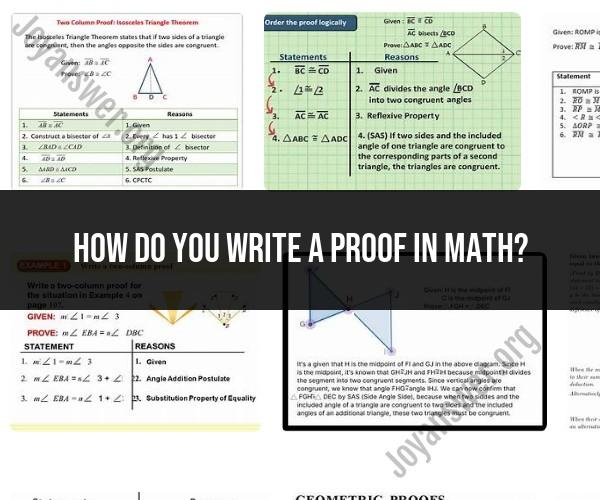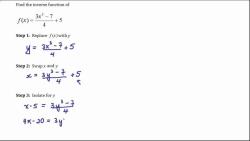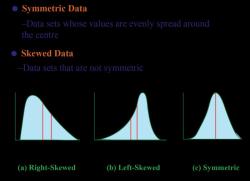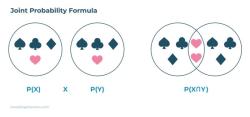How do you write a proof in math?
Writing a mathematical proof can be a structured and rigorous process. Proofs are used in mathematics to establish the truth of a mathematical statement or theorem. Here's a step-by-step guide on how to write a proof in math:
Understand the Theorem:
- Begin by thoroughly understanding the theorem or statement you want to prove. What is it asserting, and what does it mean? You must have a clear grasp of the problem you're trying to solve.
Plan Your Proof:
- Before you start writing, plan the structure of your proof. Decide on the logical steps you need to take to reach the conclusion. Think about which axioms, definitions, or previously proven theorems you can use.
Start with a Clear Statement:
- Begin your proof with a clear and concise statement of what you intend to prove. This is often called the "proof statement" or "theorem statement."
Define Your Variables:
- If your proof involves variables, define them explicitly. Clearly state the meaning and properties of each variable you're using.
Present Your Assumptions:
- If your proof relies on any assumptions or prior knowledge (e.g., axioms, definitions, previously proven theorems), state them explicitly. This helps establish the foundation of your argument.
Provide a Logical Argument:
- Present a step-by-step logical argument, explaining each step in detail. Use mathematical symbols, equations, and logical connectors (e.g., "if," "then," "therefore") to connect your ideas.
- Justify each step using theorems, axioms, definitions, or previously proven results. Make sure to show how you arrived at each conclusion.
Use Proper Mathematical Notation:
- Write your proof using standard mathematical notation and symbols. Be neat and organized in your presentation.
- Label equations, use subscripts and superscripts, and indicate which steps you're performing.
Be Clear and Concise:
- Avoid unnecessary verbosity. Keep your proof concise while providing enough detail to make your argument clear and convincing.
Consider Special Cases:
- If the theorem has special cases, address them separately within your proof. Make it clear how the proof applies to each case.
Use Counterexamples (if applicable):
- If a statement is false, consider using a counterexample to demonstrate it. This is especially useful when disproving a conjecture.
Conclude Your Proof:
- After presenting all the necessary steps and justifications, conclude your proof by restating the theorem or statement and confirming that you have successfully proven it.
Review and Revise:
- Carefully review your proof for correctness, clarity, and logical flow. Look for any gaps or errors in your argument.
- Revise and edit your proof as needed to improve its clarity and correctness.
Write a Closing Statement:
- End your proof with a closing statement that summarizes the key points and emphasizes the importance of your result.
Proofread:
- Proofreading is essential to catch any spelling, grammatical, or typographical errors in your written proof.
Format Your Proof:
- Format your proof neatly, either by hand or using mathematical typesetting software like LaTeX.
Writing mathematical proofs can be challenging, especially when dealing with complex theorems. Practice and feedback from peers or instructors are valuable for improving your proof-writing skills. Additionally, studying well-written mathematical proofs in textbooks and research papers can provide guidance on effective proof-writing techniques.
Mastering Mathematical Proofs: A Step-by-Step Guide
Mathematical proofs are a way of demonstrating that a mathematical statement is true. They are based on logic and deduction, and they are an essential part of mathematics.
To master mathematical proofs, you need to understand the basic principles of logic and deduction. You also need to practice writing proofs regularly.
Here is a step-by-step guide to mastering mathematical proofs:
- Learn the basic principles of logic and deduction. This includes topics such as logical connectives, quantifiers, and rules of inference.
- Read proofs. The best way to learn how to write proofs is to read proofs written by other mathematicians. Look for proofs in textbooks, articles, and online resources.
- Practice writing proofs. The more proofs you write, the better you will become at it. Start by writing proofs of simple theorems. Then, gradually work your way up to more complex proofs.
- Get feedback from others. Once you have written a proof, ask a friend, teacher, or tutor to review it. They can give you feedback on your logic and your writing style.
The Art of Proof Writing in Mathematics
Proof writing is an art form. It requires a deep understanding of mathematics, as well as the ability to think clearly and logically.
Here are some tips for writing good proofs:
- Be clear and concise. State your assumptions and conclusions clearly. Avoid using unnecessary language.
- Be logical. Use logical connectives and quantifiers correctly. Make sure that your steps follow logically from each other.
- Be complete. Don't leave any gaps in your argument. Make sure that you justify every step.
- Be elegant. Look for the most efficient and elegant way to prove your theorem.
From Hypothesis to Conclusion: Crafting a Sound Mathematical Proof
To craft a sound mathematical proof, you need to start with your hypothesis and then use logical steps to reach your conclusion.
Here is a basic outline for writing a proof:
- State your hypothesis. What are you assuming to be true?
- State your conclusion. What are you trying to prove?
- Write a series of logical steps that lead from your hypothesis to your conclusion. Each step should be justified by a theorem, definition, or axiom.
- Conclude your proof. State that you have proven your conclusion.
Here is an example of a simple proof:
Theorem: The sum of two even numbers is always even.
Proof:
- Hypothesis: Let and be even numbers.
- Conclusion: We want to prove that is even.
- Proof: Since and are even, we can write them as and for some integers and .
- Therefore, .
- Since is an integer, is also an integer.
- Therefore, is even.
- Conclusion: We have proven that the sum of two even numbers is always even.
This proof is sound because it uses logical steps to reach the conclusion from the hypothesis. Each step is justified by a theorem, definition, or axiom.
Proof writing can be challenging, but it is a rewarding skill to master. By following the tips above, you can learn to write clear, concise, and logical proofs.













